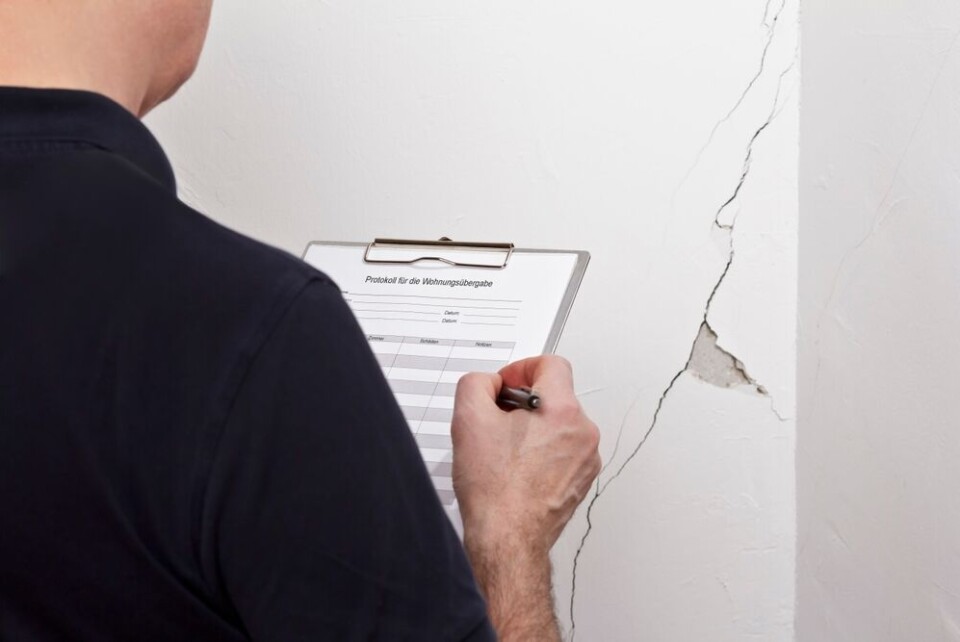-
Large increase in Americans buying properties on the Cote d’Azur
President Trump is cited as a major factor, but is not the only reason for the area’s popularity
-
Is compensation possible if a neighbour’s pet damages garden at French second home?
Disorderly pets can wreak havoc on gardens
-
Repairs on dry stone wall in France: Must stones be bought or can they be picked up?
You may need to consult your neighbour to repair border walls
Trials start to reduce drought crack risk in millions of French homes
Four construction technologies will be tested over five years as one expert calls the problem a ‘timebomb’

A five-year trial has begun looking into solutions for the millions of homes built on clay soil that are at risk of developing cracks due to drought.
Four different technologies will be tested on 300 properties whose owners have agreed to take part in the €8.5million initiative.
It is being organised by insurers’ federation France Assureurs, reinsurer CCR, and non-profit Mission Risques Naturels.
Two hundred of the properties have already suffered damage from cracking.
For the 100 others, the trial will attempt to determine how effective preventative measures could be.
‘It’s like a timebomb’
More than half of all detached homes in France are built on clay soil and are thought to face a medium to high risk of damage.
Independent building expert Regis Cotonnec, from Lot-et-Garonne, told The Connexion: “It’s like a timebomb. Properties might end up being worthless.”
France Assureurs said more than 11 million homes are probably at risk, of which 3.3 million could be seriously affected.
It warned that drought insurance was going to “cost more and more” and estimated that, by 2050, it could triple in price, compared to the past 30 years.
It said the issue cost insurers €3billion in 2022 alone, a year that was marked by historic droughts.
Read more: Drought damage claims could get easier due to reforms and Météo-France
Why is clay a problem?
Properties on clay can split due to shifts in the ground caused by alternating periods of rain and drought.
The soil swells when it rains, then retracts during dry periods. This movement can weaken foundations, leading to significant splitting and cracking in walls and floors.
Known as retrait-gonflement des sols argileux, or RGA, in the worst cases the cracks can be several millimetres wide, and render buildings uninhabitable, unrepairable and unsellable.
Property owners across the Var, Garonne basin and Centre-Val de Loire are already aware of the problem.
Due to climate change, RGA is now spreading across the Grand-Est as well as into the Bourgogne-Franche-Comté and Auvergne-Rhône-Alpes regions.
Read more: Support for French drought damage bill ‘a good start’
Four methods being trialled
The first of the four potential solutions being trialled is soil rehydration, in which water is injected around the foundations during dry periods.
It aims to prevent the land beneath from shrinking.
The second method is the installation of ‘containment’ devices in the foundations.
These seek to insulate the property with an impermeable membrane and a rainwater drainage system.
The third technology involves treating the soil around a building by injecting a solution to ‘mineralise’ the clay and limit its movement.
The final technique focuses on rebuilding the foundations, and could involve ‘micropiles’ to support the building.
While some of the four methods being tested have already been examined on a small scale, others are still at the experimental stage.
It is hoped that at least one will be an effective solution and could prevent the need for rebuilding, or the rehousing of residents.
Related articles
France’s ‘catastrophe naturelle’ insurance system: how to claim
More ‘crisis’ level drought alerts in France, water reserves stay low
France drought: checks find hundreds breaking water usage rules
























